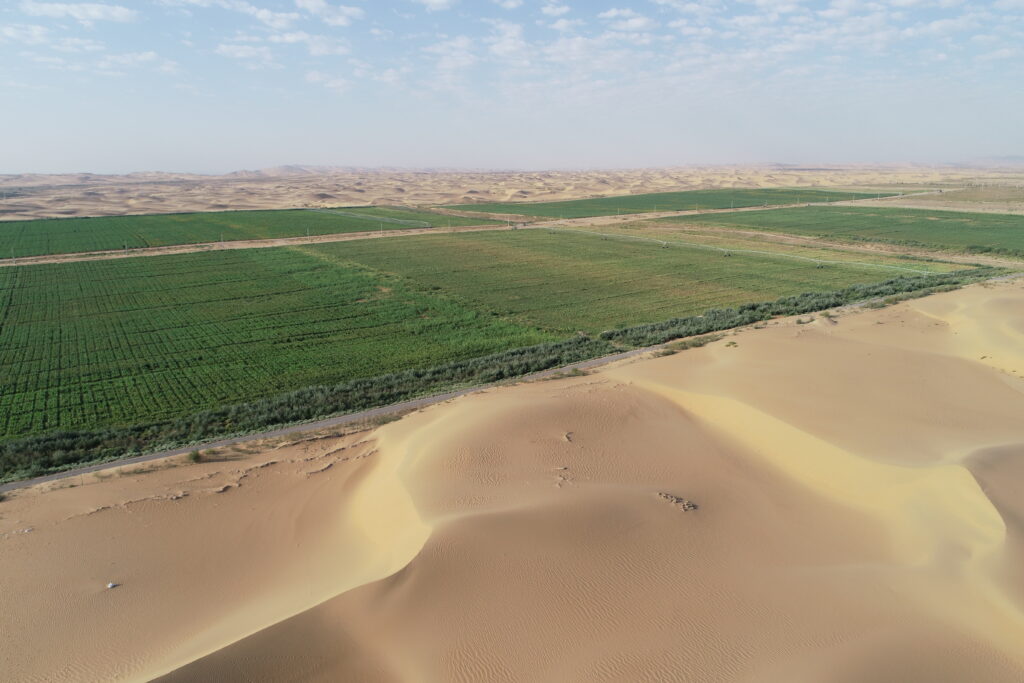Desert Promise: A New Way To Make the Desert Bloom
It’s common to hear that deserts are empty — barren wastelands where nothing can grow, and few survive. But 33% of the Earth’s surface is considered desert, and millions of people live in deserts, having survived for thousands of years in these landscapes while carving out rich lives for themselves. In the last decades, however, desertification and land degradation have threatened much of this livelihood. According to the United Nations Food and Agriculture Organization (FAO), land degradation occurs at the equivalent of 23 hectares per minute, and currently 1.5 billion people live on degraded lands. Climatic conditions and human activities have contributed to land degradation and desertification, resulting in human displacement, forced migration, conflict, falling agricultural yields, and food insecurity.
At Chongqing Jiaotong University in China, Professor Zhijian Yi has been plagued by this enormous problem. His solution? «Desert soilization,» a new technology based on mechanics for ecological recovery. According to the initiative, the science behind it is cost-effective and relatively easy to implement: the key to desert soilization is to add a special material to the sand to form an ODI constraint (omni-directional integrative constraint) among the sand granules. This alters the mechanical properties of sand, allowing it to change between wet and dry more easily. Soilized sand is able to self-repair and self-regulate, as well as retain water and nutrients, in order to grow microorganisms that can facilitate plant growth. In short? Sand becomes like soil, and soil means life.
Deserts and desertified lands are an untapped resource that is only growing — an estimated 50,000 to 70,000 sq kilometers of land are being desertified each year. With such disruptive and original technology, Desert Promise can create arable land for agricultural and animal husbandry development, providing a new solution for global food security. According to Desert Promise, plants can grow immediately in deserts after soilization, and their biomass or yield is 30% higher than the average output of local farmland. Soilized sand also uses less water than conventional soil and has high ecological value. Desert Promise claims their technology can shorten the formation of soil, which usually takes thousands of years, to a couple of months. They believe it is the only cost-effective and efficient technology that can truly make sand take up soil properties, with the integrated functions of desertification control and ecological restoration.

It might seem like magic, but Desert Promise has already been awarded 18 Chinese invention patents and 8 international invention patents. Since Desert Promise was initiated in 2016, the organization claims their desert soilization technique has been carried out in different regions and climates covering a total area of 2,000 ha, including the Ulan Buh Desert, the Taklimakan Desert in, the desertified land in Sichuan and Tibet, the Gobi Desert in Ruoqiang county, the beach sand in Xiamen, the coral sand in Xisha Islands, and the Sahara. Across the world, grains of sand are awaiting the Desert Promise touch.
